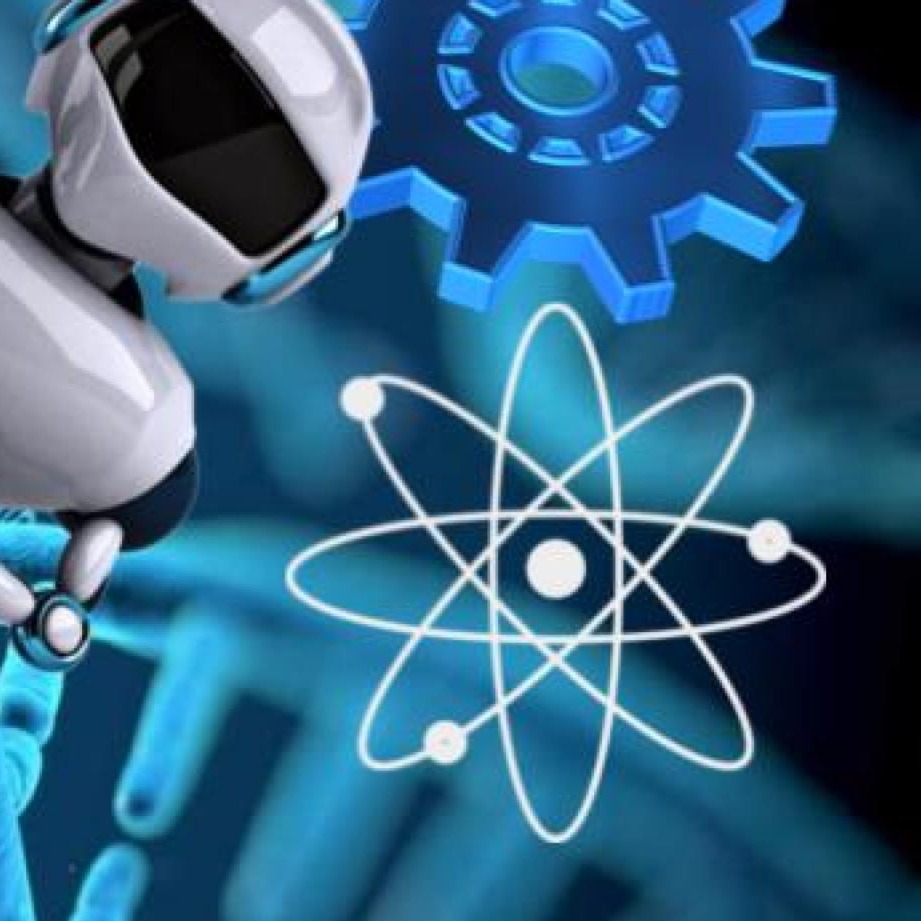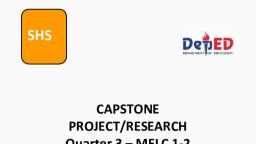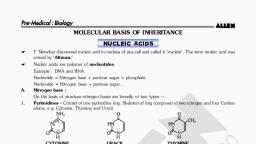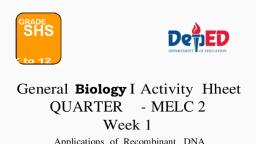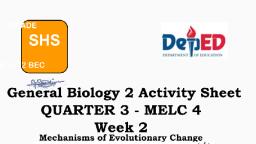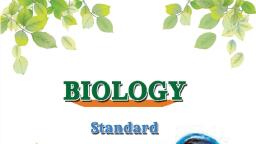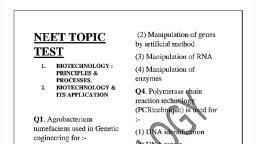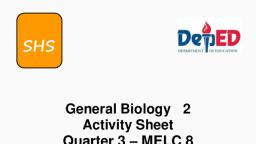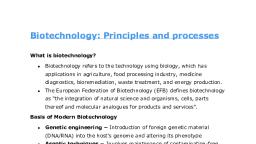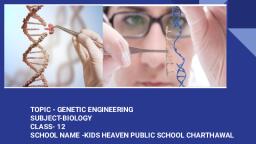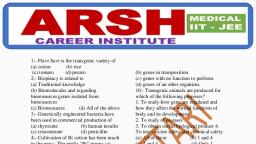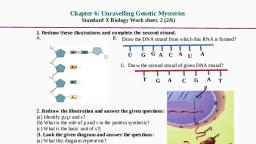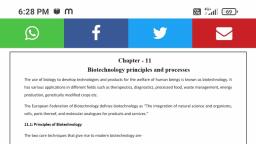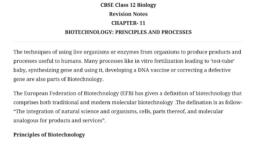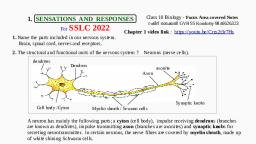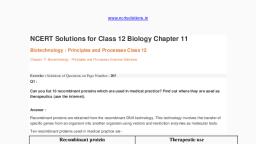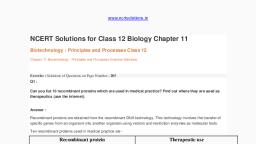Page 1 :
Genera1, , 2 Activity Sheet, , Week 1, Processes Involved in Genetic Engineering
Page 2 :
SHS General Biology I, Activity Sheet No. 1 – Processes Involved in Genetic Engineering, First Edition, 2020, Published in the Philippines, By the Department of Education, Region 6 – Western Visayas, Republic Act 8293, section 176 states that: No copyright shall subsist in any work of, the Government of the Philippines. However, prior approval of the government agency or, office wherein the work is created shall be necessary for exploitation of such work for profit., Such agency or office may, among other things, impose as a condition the payment of, royalties., This Learning Activity Sheet is developed by DepEd Region 6 – Western Visayas., ALL RIGHTS RESERVED. No part of this learning resource may be reproduced or, transmitted in any form or by any means electronic or mechanical without written permission, from the DepEd Regional Office 6 – Western Visayas., , 2
Page 3 :
Welcome to SHS General Biology I!, The Learning Activity Sheet is a product of the collaborative efforts of the Schools, Division of Aklan and DepEd Regional Office VI - Western Visayas through the Curriculum, and Learning Management Division (CLMD). This is developed to guide the learning, facilitators (teachers, parents and responsible adults) in helping the learners meet the, standards set by the K to 12 Basic Education Curriculum., The Learning Activity Sheet is self-directed instructional materials aimed to guide the, learners in accomplishing activities at their own pace and time using the contextualized, resources in the community. This will also assist the learners in acquiring the lifelong learning, skills, knowledge and attitudes for productivity and employment., , For learning facilitator:, , 3
Page 4 :
The SHS General Biology I Activity Sheet will help you facilitate the teachinglearning activities specified in each Most Essential Learning Competency (MELC) with, minimal or no face-to-face encounter between you and learner. This will be made available to, the learners with the references/links to ease the independent learning., , For the learner:, The SHS General Biology I Activity Sheet is developed to help you continue, learning even if you are not in school. This learning material provides you with meaningful, and engaging activities for independent learning. Being an active learner, carefully read and, understand the instructions then perform the activities and answer the assessments. This will, be returned to your facilitator on the agreed schedule., , 4
Page 5 :
Name of Learner:, Grade and Section:, , Date:, , SHS GENERAL BIOLOGY I ACTIVITY SHEET No. 1, , Processes Involved in Genetic Engineering, , Outline the processes involved in genetic engineering (STEM_BIO11/12-IIIa-b-6), , The process of genetic engineering is not a simple task, it requires complex machinery, and innovative minds. Since farming began, humans have been selectively breeding different, plants, doing so provided more food and better food for all. This process is genetic, engineering in much simpler terms than we think of it today., In simple perspective, genetic engineering is the process of manually transferring, genetic information from one organism to another. But, when one thinks of the processes in, genetic engineering they are more likely to picture a complicated science which, involves altering the very building blocks of life., Genetic engineering is accomplished in three basic steps. These are (1) The isolation, of DNA fragments from a donor organism; (2) The insertion of an isolated donor DNA, fragment into a vector genome and (3) The growth of a recombinant vector in an, appropriate host., , 1
Page 6 :
The Process of Genetic Engineering, Genetic engineering is the process of using recombinant DNA (rDNA) technology to alter the, genetic makeup of an organism. Traditionally, humans have manipulated genomes indirectly, by controlling breeding and selecting offspring with desired traits. Genetic engineering, involves the direct manipulation of one or more genes. Most often, a gene from another, species is added to an organism's genome to give it a desired phenotype., One of the most amazing things about life on earth which we often take for granted is that all, life uses the same DNA code to store its information and create proteins. Because all of life, uses the same DNA code, we are now able to combine DNA from one species with another, in order to produce proteins in new and different ways which is revolutionizing science and, medicine. The bacterial plasmids which you already know about are often very crucial for, these genetic engineering techniques. There are several steps in the process of genetic, engineering. Scientist follow a step-by-step process in order to alter the DNA of an organism., As shown in Figure 1, the first stage of the process is to identify the section of DNA, that contains required gene from the source chromosome. Second stage, extract the, required gene. Third stage, bacterial plasmid is removed from the bacterial cell and cut open, using enzymes. Fourth stage, insert plasmid into host cell and sealed using enzymes. Fifth, stage, grow transformed cells to produce a genetically modified organism (GMO)., Genetic engineering involves the direct manipulation of one or more genes. Most, often, a gene from another species is added to an organism's genome to give it a desired, phenotype., , Activity 1., Directions: Arrange in sequence the process of genetic engineering from first to last by, writing 1 – 5 on the box provided before each stages., , 2
Page 7 :
Activity 2., Directions. Study the figures below. Choose the correct process of genetic engineering inside, the box and write your answers on the box provided for each step., , Complete the statements below., I understand, , I don’t understand, , 3
Page 9 :
5
